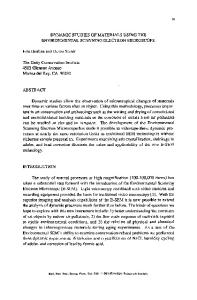Electron Microscope Tomography of Native Membranes
Membrane proteins are often present in low amounts in cells. Their function can be modulated by interactions with other proteins. Moreover, these complexes can be transiently formed, thus making them difficult to be isolated and to be purified. One way to
- PDF / 2,328,450 Bytes
- 15 Pages / 504 x 720 pts Page_size
- 48 Downloads / 388 Views
1. Introduction Many membrane proteins function in situ as protein complexes. These complexes may be formed by homo or hetero-functional polymers and be stable over long time periods, but they can also be due to transiently associated proteins. In this latter case, their purification is often difficult. Moreover, their amount in cells can be so low that it increases the difficulty to get enough amounts to determine their structures (1). Confocal microscopy permits cells imaging and membrane protein complexes characterization using fluorescence probes. However, resolution is limited to micron scale (2). Determination Jean-Jacques Lacapère (ed.), Membrane Protein Structure Determination: Methods and Protocols, Methods in Molecular Biology, vol. 654, DOI 10.1007/978-1-60761-762-4_12, © Springer Science+Business Media, LLC 2010
221
222
Péranzi et al.
of membrane protein atomic structure is mostly obtained with purified proteins and does not give information of their natural partners in their membrane environment. Electron tomography of tissues section, cells and organelles makes the link between the two types of observation (3, 4). In particular, protein–protein interactions from different membranes, such as those involved in mitochondria have gained from electron tomography (5–8). Details of the organization of internal membrane structure of mitochondria have been revealed to be more complicated than previously popularized in textbooks. This chapter describes protocols to get three-dimensional structures of mitochondria within cells by electron tomography using freely accessible programs. It compares structures observed in normal and pathological conditions.
2. Materials 2.1. Cells
1. Human colonic adenocarcinoma cell line HT-29 (passages 179–186) was kindly provided by Dr. C.L. Laboisse (Nantes, France). 2. Cells were grown in Dulbecco’s minimal essential medium (Invitrogen, Cergy Pontoiseand France) and supplemented with 10% fetal calf serum (Invitrogen, Cergy Pontoise, France) as previously described (9). 3. Cells were cultured for 24 h in the absence or in the presence of, 7.5 ng/ml TNF (Tumor Necrosis Factor, RD Systems Europe, Lille, France), for inflammatory stress conditions (10).
2.2. Sample Preparation for Electron Microscopy
1. Cell isolation buffer A: 50 mM cacodylate pH 7.4 incubated at 37.5°C. 2. Fixation in buffer B: Buffer A supplemented with 12.5 mM lysine, 5 mM EGTA and 50 mM glutaraldehyde. 3. Washing buffer C: 50 mM barbital pH 7.6. 4. Postfixation in buffer D: Buffer C supplemented with 1% v/v osmium. 5. Staining medium: 0.05 M uranyl acetate in water. 6. Solutions of increasing alcohol were 50, 70, 90 and 100% ethanol in water. 7. Epon mixture: 24 g LX112 resin solution, 16 g of dodenyl succinic anhydryde, 10 g nadic methyl anhydride and 1.5 DMP-30 (Euromedex, Mundolsheim, France). 8. Preembedding medium: 50/50 1,2-epoxypropane and epon mixture.
Electron Microscope Tomography of Native Membranes
223
9. Sections (200 nm, purple-red color): Ultramicrotome Ultracut E (Reichert-Leica,
Data Loading...










